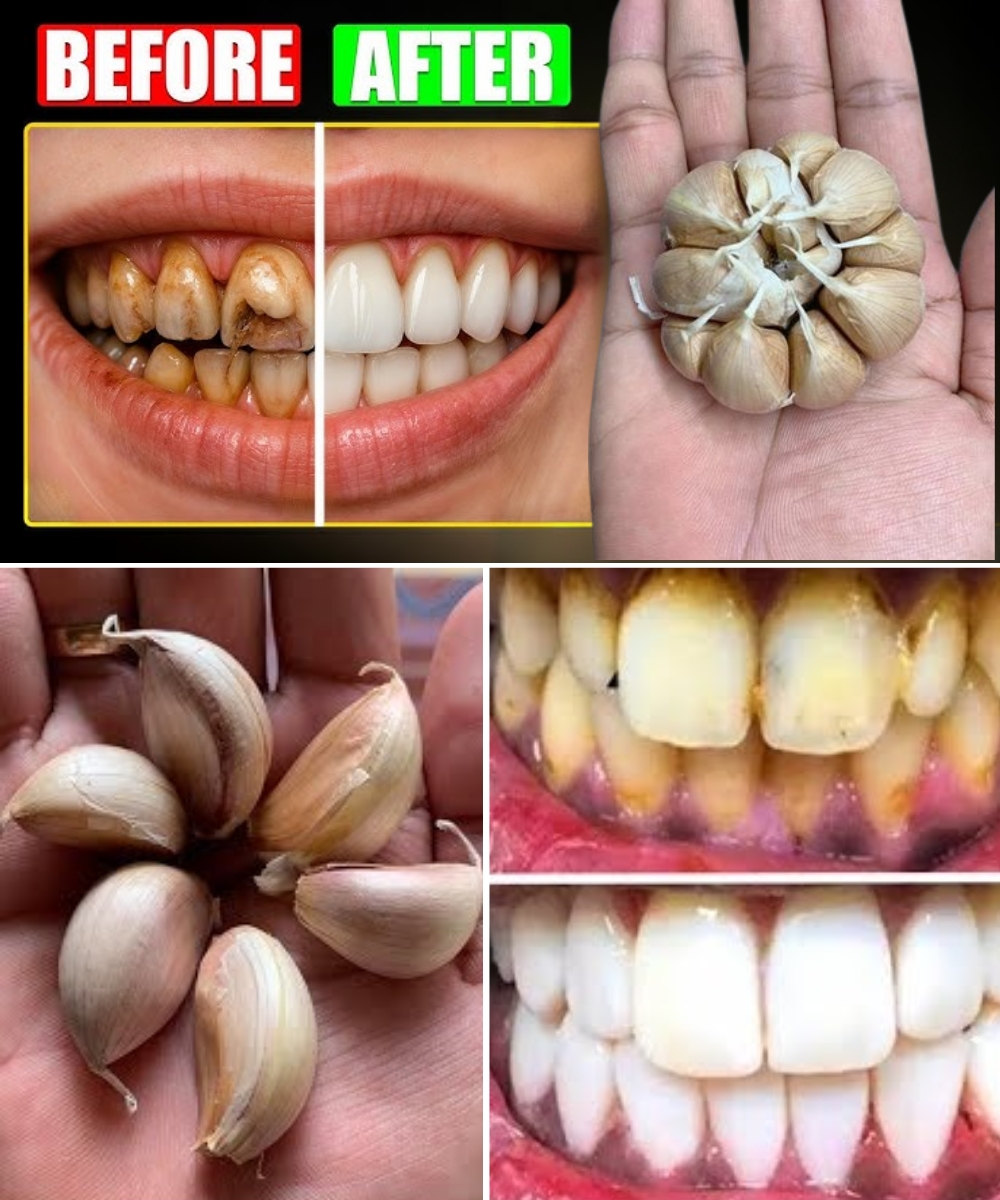Discover how garlic can gently support your smile—without chemicals or complicated routines.
Are you looking for a gentle, natural way to care for your teeth and gums—without breaking the bank or relying on harsh treatments? You might be surprised to find the answer right in your kitchen.
Garlic—yes, that humble, flavorful bulb—is gaining new attention not just for its heart health benefits, but also for its quiet power to support oral wellness. 🌿 Especially for those between 45 and 65, garlic may offer a comforting addition to your dental care routine.
Let’s explore how this time-tested ingredient may help you manage tartar, freshen your breath, and feel more confident about your smile. 😊
🌱 Why Garlic May Help Your Teeth and Gums
When crushed, garlic releases a compound called allicin—a natural substance with powerful antibacterial and antifungal properties. Allicin helps reduce harmful bacteria in the mouth that contribute to:
- Tartar buildup
- Gum inflammation
- Bad breath
- Mild plaque and discoloration
And the best part? It’s gentle, affordable, and easy to use—when handled with care.
🧴 How to Use Garlic for Oral Health
You don’t need fancy tools or special formulas—just a clove of garlic and a few minutes.
👄 Garlic Paste
A simple way to target bacteria around your gums.
How to use:
- Crush 1 fresh garlic clove
- (Optional) Mix with a pinch of salt
- Apply gently to your gums and teeth
- Leave on for 1–2 minutes
- Rinse well with water
Salt adds mild exfoliation and can enhance the cleansing effect. Be gentle—no scrubbing!
🌀 Garlic Mouthwash
Prefer something less direct? Try this calming rinse:
How to make:
- Mince 1 garlic clove
- Steep in ½ cup warm water for 5–10 minutes
- Strain and cool
- Swish in your mouth for 30–60 seconds
- Rinse with plain water afterward
This mild infusion offers a softer way to benefit from garlic’s properties.
🍃 What About Garlic Breath?
We get it—garlic’s smell can linger. But there are easy, natural ways to freshen up after use:
- Chew fresh parsley or mint
- Rinse with diluted apple cider vinegar
- Brush with a bit of baking soda toothpaste
These small steps can keep you feeling clean and confident.
⚠️ A Few Gentle Precautions
Garlic is strong—and while natural, it may not suit everyone.
✔ Test on a small area first
✔ Don’t leave on too long
✔ If irritation occurs, stop use
✔ Check with your dentist before making it a habit—especially if you have sensitive gums, open sores, or dental work
🦷 Garlic vs. Tartar: What to Expect
Garlic may help reduce bacteria and slow the buildup of new tartar, but it won’t remove hardened tartar already present. For that, professional cleanings are still essential.
Think of garlic as a supportive friend—not a substitute for dental care, but a helpful part of a bigger wellness routine.
💬 Final Thoughts: Natural Care, Balanced Approach
Using garlic for oral health might sound unconventional—but its natural antibacterial benefits are worth exploring, especially for those seeking gentle, affordable support for teeth and gums.
Just remember:
🪥 Keep brushing and flossing
👩⚕️ See your dentist regularly
🧄 Use garlic as a mindful addition—not the whole plan
When used wisely, garlic can be more than just a kitchen staple. It can be a simple act of self-care—one that helps you feel fresher, healthier, and more at ease with your smile.
